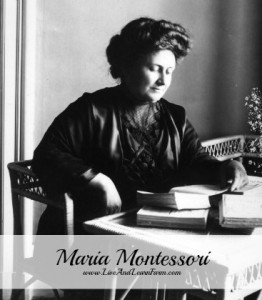 This is part two of an ongoing exploration of Maria Montessori’s vision for middle school and high school. I’ve dubbed it Farmschooling – Montessori Middle School. In part 1 we discussed what is going on in the teenage mind and how unsure of themselves they really are. In part 2 we will explore some of the recommendations Montessori made for reaching our teens! Again, I will be quoting from Montessori Today by Paula Polk Lillard. (Note we are a participant in the Amazon Services LLC Associates Program, an affiliate advertising program. Any money received via this relationship is used for our homeschool! PS. I’ve made a grand total of $0.00 from affiliate marketing… but the FTC says I have to tell you that IF you buy it, I will make 4% of the sale as commission.) And, same as before, in some areas I will paraphrase and in other areas I will quote verbatim.
This is part two of an ongoing exploration of Maria Montessori’s vision for middle school and high school. I’ve dubbed it Farmschooling – Montessori Middle School. In part 1 we discussed what is going on in the teenage mind and how unsure of themselves they really are. In part 2 we will explore some of the recommendations Montessori made for reaching our teens! Again, I will be quoting from Montessori Today by Paula Polk Lillard. (Note we are a participant in the Amazon Services LLC Associates Program, an affiliate advertising program. Any money received via this relationship is used for our homeschool! PS. I’ve made a grand total of $0.00 from affiliate marketing… but the FTC says I have to tell you that IF you buy it, I will make 4% of the sale as commission.) And, same as before, in some areas I will paraphrase and in other areas I will quote verbatim.
In part 1, we learned that the third plane child has a very difficult time concentrating and focusing. However, Montessori still had faith in the teen’s abilities, even with their diminished concentration. She believed in the benefits of academic knowledge and intellectual study, and how important it is to grow and expand the field of knowledge. Study, she believed, answers a need of the intelligence and therefore, does not cause mental fatigue, on the contrary, she believed that it regenerates and strengthens “the development of the mind.” She further discussed that adolescents have a great need for creative expression. This is not for the purpose of understanding art, but for their own means of self-expression and self-discovery.
Maria Montessori discusses that the child’s natural drive for independence is further extended in the third plane into two new areas:
- a need to make a “direct contribution to society and have it recognized” and
- a desire to become financially independent
We, as parents, need to encourage students in their efforts to achieve independence via helping them identify opportunities opportunities where they can experience stewardship and selflessness.
One of the teen’s primary focuses is to understand and explore reality, in both the natural world and in human organizations and institutions. Their mantra shifts from “help me to do it myself” to “help me to think for myself”. In the natural world, they want to test themselves, to test what they can do, how far, how fast, etc. and to explore what they can become. So opportunities that might present themselves to explore would be work with Habitat for Humanity, hiking, backpacking, and various wilderness adventures. In this plane, they are learning to use tools, work the land and develop skills for maintenance and repair of minor machinery.
In the human organizations and institutions category, it perfectly matches their desire for financial independence, they want to explore:
- commerce
- trade
- production and
- economic exchange
At this stage they are learning to question deeply and research answers… with a focus on solving problems. And the adults in their world NEED to listen to their teen, their reasoning, their conclusions, their ideas, their imagination. Give them a voice and an avenue to be heard… not only at home but also in the larger world. Get them involved in activities outside the home, especially environments where they can collaborate and work with other homeschoolers, such as coops, virtual homeschool classes, etc. They need this interaction with peers where they can develop self confidence and explore their capabilities.
For homeschoolers, this can be a challenge. However, we have recently stumbled upon a fantastic organization Virtual Homeschool Group. My boys have been taking middle school science, photography and Spanish via VHSG all this year and we are more than impressed. I am shocked at how much my boys love the interaction with the teachers and students, the classes and the quality of instruction they are receiving. And did I mention it is FREE? Yep, and I’m not kidding. We have been enrolled for this entire school year and the only money they received was a donation we gave ’cause we are so impressed! There are ways to bring your homeschool students into this kind of peer rich environment! Seek them out for your children!
Montessori, like in all the planes before, continues the focus on development of the child’s personality. In the younger child, this development of their personality is called “normalization”, in the third plane Montessori calls it “valorization of the personality”. Valor’s root in Latin means strong or worthy… she defines it as: “discovering and developing one’s own worthiness and strength”. It is THE goal of the third plane teen.
In the Cincinnati Montessori Secondary Teacher Education Program, Marta Donahue shared a chart that was shared with her 16 before from John Long. It shows the characteristics the child is ready to develop in the lower plane of development and the third plane of development. If we can remember what characteristics we are trying to develop, a well thought out plan can invoke these qualities… and bring forth valorization!
The vogue “self-worth” concept is NOT what Montessori meant by self confidence. She referred to is as a practical notion grounded in the individual’s profound sense of REAL accomplishment. In understanding their real limits and capabilities. Success in life depends on a self-confidence born of a true knowledge of one’s capabilities, combined with the many-sided powers of adaptation…. and Montessori believed this can only be accomplished through work and direct experience of the environment.
The challenge for the educator of the third plane (12 – 18) child is to develop an education plan that combines intellectual pursuits and discovery with REAL situations… both in nature and in society. Montessori emphasized that subjects should be interlinked instead of divided into categories. So all-inclusive curriculum or unit studies are absolutely something we will be investigating! We have one already identified that we are planning to use this summer. It is called Paths of Exploration and we are already starting to make this curriculum more hands-on. You can see these works here. And, just as in the lower planes, students are encouraged to follow their interests. Again the teacher is to serve as a guide.
We can summarize part 2 with these thoughts. Teens have a strong need to:
- . work
- be challenged
- be empowered
- work the land
- build community
- develop a personal vision
Maria Montessori mentions six areas as the foundation of the academic program for the adolescent. We will explore those in part 3.
Until next time
You may also like -
Trish Corlew
Latest posts by Trish Corlew (see all)
- 10 Fun and Educational Preschool Board Games - April 25, 2015
- March Menu Plan for Busy Homeschool Moms - March 10, 2015
- Middle and High School August LinkUp #24 - August 5, 2014
- Modeling Life-Long Learning - June 23, 2014
- The New Chapter – Day 1 with Free Printable - June 20, 2014
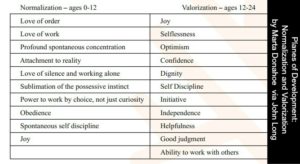
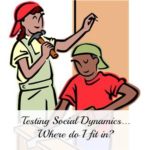
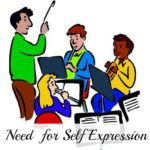

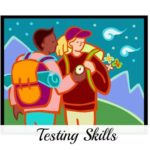
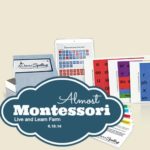
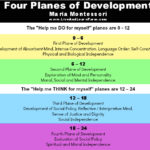

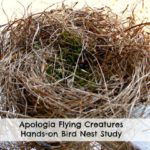
I really enjoyed reading this and I hope to use some of these ideas when my boys get a little older.
Thank you! As much as I thought I knew and was ready for middle school, I’m learning so much! I guess that’s how it is when it’s theory versus reality. I’ll be reading more books by Montessori and will probably have even more to share then! Thanks for stopping by and visiting!
What an incredible resource you are working on! Paving the way for people like myself with younger children and a love for Montessori-inspired learning!
I particularly thought the description of the shift from “help me to do it myself” to “help me to think for myself” was great! Thank you!
Thanks Rachel!!! I appreciate you stopping by and want you to know how your encouragement means! Thank you all for being such a great group of women and helping me face the uncertainties of being a bit of a pioneer in the secondary education of Montessori in a homeschool environment!